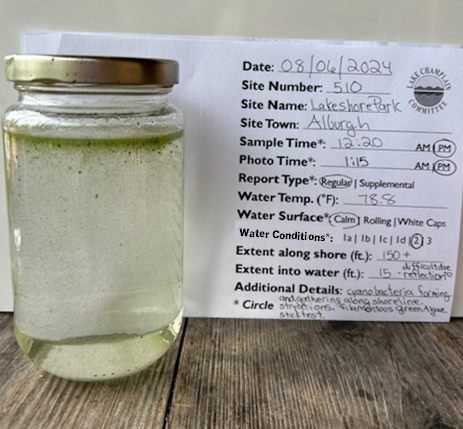Instructions for Photographing Cyanobacteria & Taking Water Samples
Please take digital photographs of the water when category 1d, 2 or 3 conditions are observed.
We need three photographs:
- A close-up of a water sample in a clear container and placed against a solid contrasting background so objects in water are visible. A white background is preferable. Download LCC's Cyanobacteria Reporting Photo Card to use as a background and record information on for your jar test photos!
- A close-up of the water surface.
- A broad view of water in the vicinity.
When collecting a water sample to photograph take care to avoid exposure to cyanobacteria. Wear gloves, don't wade or immerse yourself in the water and wash any exposed portions of your body immediately after collecting the sample. After sampling wash the gloves before reusing them. It is okay not to collect a physical sample for photography if you are uncomfortable doing so.
For best results, collect samples in water about knee deep. Invert the container before submerging it into the water and then tilt it once it is underwater. This gives a more representative sample by collecting more than just surface scum.
All photographs should include the time, date, and location. This information can be added by using the date stamp on your camera or by holding a piece of paper with the relevant information in the picture. Name the photograph with this file format: YYYYMMDD_Photographer’sFirstNameInitialLastNameInitial_SiteNumberSiteName_Cat#_PhotoType
Example photo file name: 20240815_CC_510LakeshorePark_Cat2_Jar



